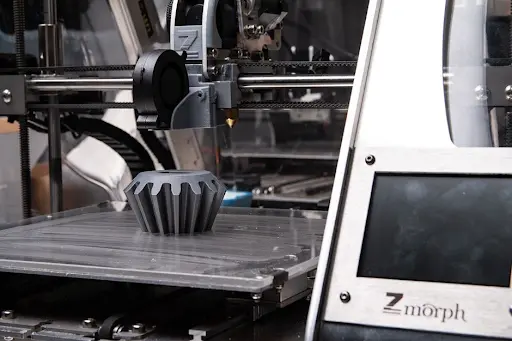
7 Tools Every New and Experienced Mechanical Engineer Needs
Read a summary using the INOMICS AI tool
Mechanical engineering is one of the most diverse and oldest engineering disciplines. Every day, engineers get to enjoy variety in their day with design, production, and operation while drawing upon their knowledge in mathematics, engineering, physics, and more.
With such a broad range of skills required, mechanical engineers have a complex and wide-ranging arsenal of tools to assist with their daily needs. If you’re ready to enter the engineering workforce or you’re curious about what some of the best mechanical engineers use, take a look at these machines and tools below.
Fiber Laser Machines
A fiber laser machine is essentially a laser engraver for metals that allows you to make readable marks on metal surfaces like steel, anodized aluminum, magnesium, and zinc. They are consumable-free machines and can help you etch everything from serial numbers on important metal parts to logos, QR codes, barcodes, and more.
There are a number of different options for the average mechanical engineer to choose from, such as manually-loaded machines that can require more human intervention or fully-automated machines that utilize robotic arms to hold and load parts. Such machines are becoming commonplace in many engineering businesses where speed, efficiency, and accuracy with etching and engraving are essential.
Cold Forming Press
Many years ago, if people wanted metal parts to be made, including bolts and screws, they had to forge them by hand. There were significant inconsistencies and even some failures, and the results weren’t always perfect. That all changed with the invention of the cold forming press.
Cold forming presses are horizontal machines that feed wire, cut it to length, then move it through tools and dies to turn it into the shape you need. Cold forming presses are used for metal, plastic, and other materials to create valves, bolts, fasteners, and more. They are one of the most convenient machines in any engineering firm.
3D Printer

Mechanical engineers often utilize 3D printers to make plastic or metal 3D parts for testing purposes. They might create the shape of a piece they need to use, see how it functions in place, then modify the design until it begins working as they expect. These machines can save a significant amount of time and money, even if patience can be required due to how long they take to build components.
Vibration Isolator
One of the last things you want in any engineered system is vibrations, which is why isolating vibrations from their source and troubleshooting the issue can be crucial. Engineers often rely on vibration isolators for this task.
Mechanical vibration isolators are a type of flexible support that decouples two materials that may be vibrating. Typically, springs are utilized as the isolators to minimize force and may contain fluid damping, steel coil, pneumatic, rubber, or a combination of these.
Semiconductor Process Systems
Semiconductor process systems are an asset to any mechanical engineer when creating circuit wafers, flat panel displays, and other electronic devices. These systems have transistors and wiring on semiconductor wafers that allow engineers to develop data chips for electronic auto parts. They can also rely on them to test any electronic equipment.
Digital Force Gauge
A digital force gauge or push-pull force gauge is a device with a load cell inside that mechanical engineers use to measure tension or pressure in a specific part of a machine. Engineers can rely on these gauges throughout the machine-building and testing process, including intricate components like wires to ensure they have as much tension as needed.
These convenient tools are available in digital, analog, and mechanical styles, with digital often being preferred for its ability to reduce human error.
Caliper
A caliper is among the most common tools in the average mechanical engineer’s toolbox. This small, innovative device allows engineers to measure the dimensions of large and small parts and machines. Rather than relying on a ruler with a more considerable margin of error, engineers can push each end of a caliper flush against a part and gain all the correct dimensions to recreate it with accuracy.
Many engineers prefer digital vernier calipers, which can make an excellent gift, as they are known to be highly accurate with a tolerance of up to 0.01mm.
Every day is different for the average mechanical engineer, and they get to enjoy various design, production, and operation phases for a wide range of projects. If you haven’t yet used or purchased one of these tools or machines above, now might be the right time to start looking at your options.
We would like to thank Laserax for their support in producing this career advice article for New Engineer.
Header picture: Pixabay
-
- Programme de Maîtrise
- Posted 1 year ago
Data Science (BA/BSc)
at Concordia University in Montréal, Canada -
- Administration Job
- (Partially Remote)
- Posted 3 months ago
Financial and Process Officer (EN-MME-2025-37-LD)
At CERN - Conseil Européen pour la Recherche Nucléaire in Genève, Suisse -
- Professional Training Course, Supplementary Course, Online Course
- (Online)
- Posted 10 months ago
Introduction to Data Science in Python
at Coursera







